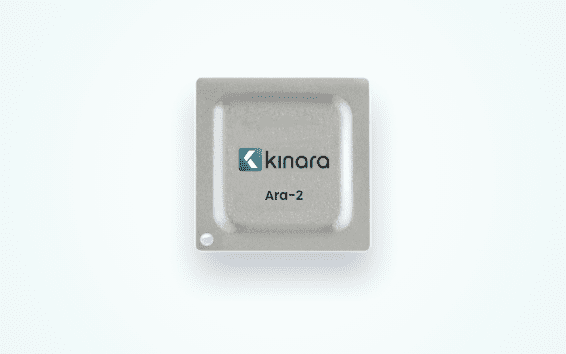TL;DR:
- Kinara introduces Ara-2 processor, offering an eightfold performance boost for on-device AI.
- Ara-2 complements Ara-1, catering to heavier workloads with 16-32+ video streams.
- Significantly enhances object detection, recognition, and Generative AI model processing.
- Ara-2 is 5-8 times more powerful than its predecessor, positioning it as a potential GPU replacement.
- Multiple Ara-2 iterations are to be unveiled at CES 2024; pricing details remain undisclosed.
Main AI News:
In the ever-evolving landscape of energy-efficient artificial intelligence at the edge, Kinara emerges as a pioneering force with the unveiling of the Ara-2 processor. This cutting-edge innovation promises an astounding eightfold improvement in performance compared to its predecessor, setting a new standard for large language models (LLMs) and generative AI models operating on-device.
The Ara-2 processor is the culmination of Kinara’s unwavering commitment to innovation. It represents a significant leap forward in their processor portfolio, offering customers a range of performance and cost options tailored to their unique needs. To appreciate the significance of this release, let’s delve into the distinctive capabilities of Ara-1 and Ara-2 processors.
Ara-1, Kinara’s previous offering, excels in serving smart cameras and edge AI devices, efficiently handling 2-8 video streams. In contrast, Ara-2 steps into the spotlight with its remarkable prowess in managing heavier workloads, seamlessly processing 16-32+ video streams directed towards edge servers, laptops, and high-end cameras.
The transformative potential of Ara-2 cannot be overstated. It plays a pivotal role in enhancing object detection, recognition, and tracking, thanks to its advanced computing engines. This processor exhibits remarkable speed in processing higher-resolution images while maintaining impeccable accuracy. Moreover, its capabilities in handling Generative AI models are exemplified by its ability to process Stable Diffusion at a remarkable speed of 10 seconds per image and generate tens of tokens per second for LLaMA-7B.
Designed as the successor to Ara-1, the Ara-2 chip represents a significant leap in performance, offering an exponential boost that is reportedly five to eight times more powerful than its predecessor. Kinara firmly believes that the Ara-2 chip has the potential to replace higher-cost and power-intensive graphics processors in various applications, particularly in the realm of large language models (LLMs).
Anticipation is building as Kinara prepares to unveil the Ara-2 processor at the prestigious Consumer Electronics Show (CES) in January 2024. The company has confirmed multiple iterations of the Ara-2 processor, including standalone chips, single-chip USB and M.2 modules, and a PCI Express add-in board integrating four Ara-2 chips operating in parallel. However, pricing details remain a well-guarded secret, leaving enthusiasts and consumers eagerly awaiting the opportunity to explore this technological marvel.
Conclusion:
The introduction of Kinara’s Ara-2 processor signifies a major advancement in on-device AI processing. With its exceptional performance boost, Ara-2 is poised to disrupt the market by offering cost-effective alternatives to power-intensive graphics processors. This innovation sets the stage for enhanced AI capabilities across various industries, further fueling the growth of the on-device AI market.

